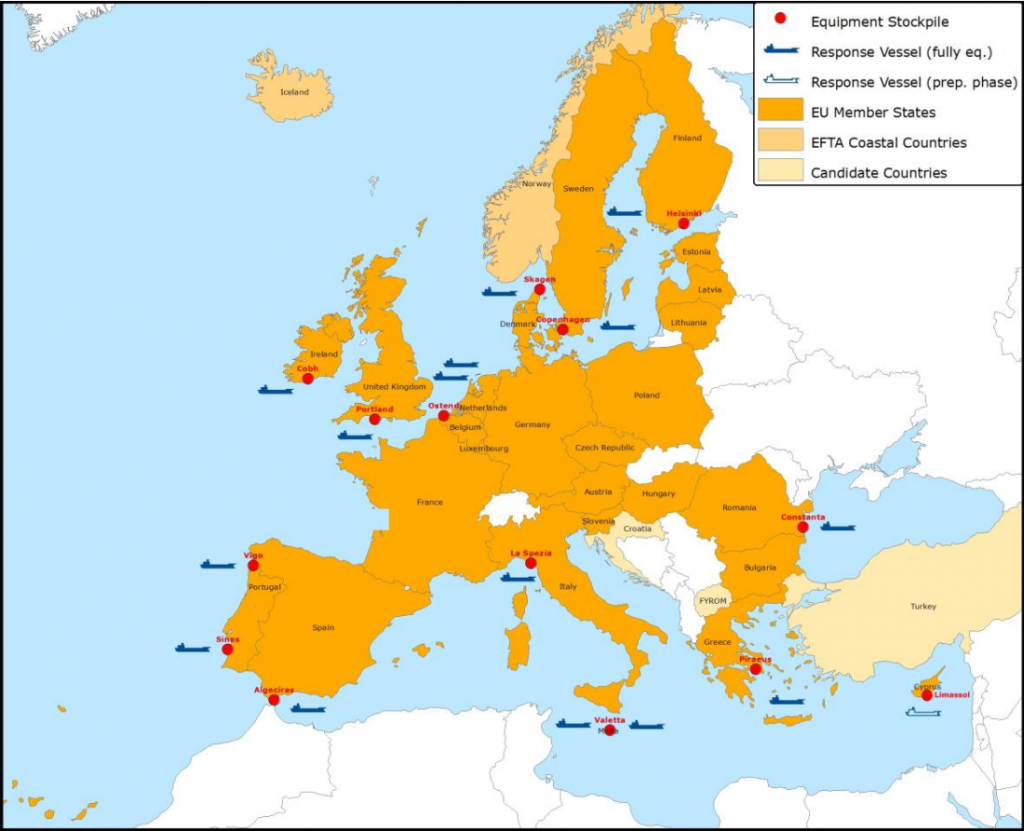EMSA strengthens its network of oil spill recovery vessels in the Eastern Mediterranean
(Lisbon, 19/11/2010) The European Maritime Safety Agency (EMSA) has signed a contract to provide pollution response capacity using the Limassol, Cyprus-based tanker Alexandria. The newly-contracted vessel considerably strengthens EMSA’s oil-spill response coverage of the Eastern Mediterranean Sea, a sensitive sea area given its proximity to major oil transport routes transiting the Suez Canal, and those originating in Black Sea and Middle-Eastern ports.
EMSA selected Petronav Ship Management Limited, a Cypriot Company, to provide pollution response capacity through its tanker Alexandria. The Service Contract signed with Petronav has a duration of four years with a total value of 4.5 million euros, renewable once for an additional four years. ‘EMSA’s network of vessels has been set up to ‘top-up’ the capacity of European Member States in the event of a major marine pollution crisis. We have been keen to reinforce the network’s coverage of the Eastern Mediterranean Sea, a very sensitive region as it is a major corridor for oil and petrochemicals, feeding ports and refineries across Europe,’ says EMSA Executive Director Willem de Ruiter. ‘This was one of the main targets for 2010, so I am particularly pleased to have covered this gap in the network.’ EMSA’s network of stand-by oil pollution response vessels Regulation 724/2004/EC gives EMSA the task of assisting EU/EEA Member States in their response to ship-sourced pollution within the Community.
EMSA has built a network of stand-by oil pollution response vessels that covers the whole of the European coastline, and serves to ‘top up’ the existing pollution response capacity of Member States. The network is based on contracted vessels which are equipped with oil spill response equipment as per EMSA requirements. The vessels carry out their ‘normal’ commercial operations on a day-to-day basis, yet when needed can be adapted at short notice to serve as oil spill response vessels. With state-of-the art equipment, such as oil slick detection radars, sweeping booms and skimmers, the vessels can be scrambled into action at the command of the Member State. The map overleaf shows the current status of EMSA’s network.

